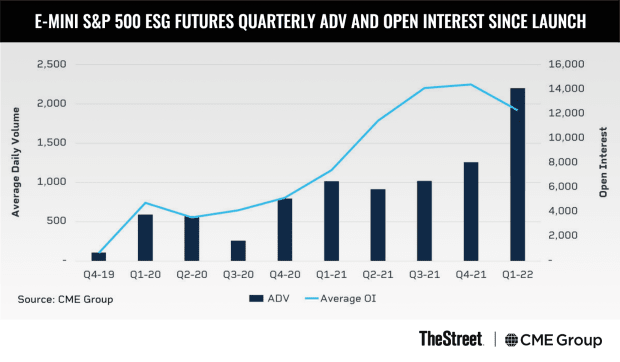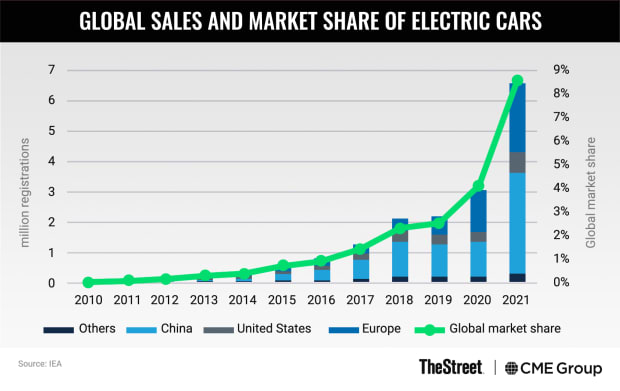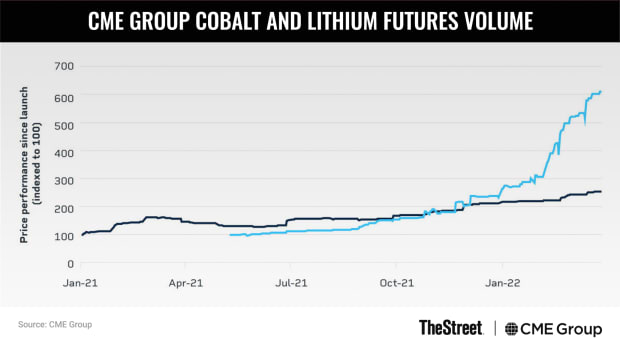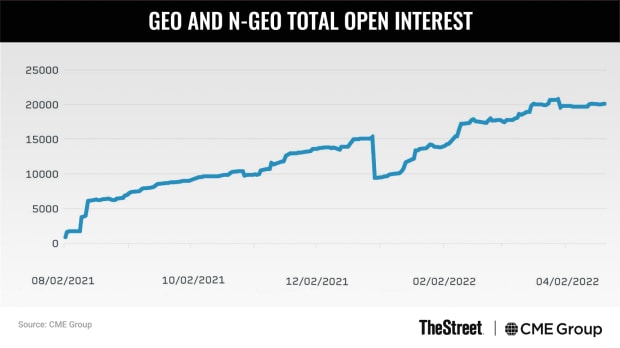Earth Day 2022 followed a report months earlier from the Intergovernmental Panel on Climate Change (IPCC) that warned global temperatures could rise more than 2°C. during the 21st century. This, together with the agreement signed at COP26 in November 2021, shows the magnitude of the climate challenge.
Several trends in financial markets show a growing awareness of the need for environmentally sustainable solutions. Following are four areas worth a closer look at: ESG solutions in equity index markets, the shifting biofuels market, a thriving battery metals market fueled by electric cars, and the growth of the voluntary carbon offset market.
ESG Equity Index
As the Environmental, Social, and Governance, or ESG, ecosystem evolves, ESG investments must keep pace to provide robust solutions to market participants. In the equity space, this evolution translates to index providers ensuring their indices reflect the overall trajectory of ESG investing.
Underlying this ESG evolution is tremendous growth in ESG investments, including derivatives, like CME Group’s E-mini S&P 500 ESG Index futures, which have become the most liquid ESG equity index futures contract globally.
To further align with the rapidly evolving ESG landscape, S&P Dow Jones Indices (S&P DJI) will amend the eligibility requirements for their ESG indices beginning in May 2022. The updates to exclusions and eligibility requirements reflect the growing need for index providers to properly account for companies’ business activities, which ultimately ensures ESG investors can accurately assess the behavior of those companies within the index.
Recent trends in E-mini S&P 500 ESG Index futures illustrate how investors can find solutions that fit their ESG needs. Average daily volume in ESG futures is up over 100% already in 2022 and has steadily grown since the contract’s launch.

Since their launch in November 2019, ESG futures contracts have surpassed $94 billion of traded notional and in mid-April 2022 surpassed 13,500 contracts of open interest, equivalent to nearly $3 billion.
The Rise of EVs
With the help of advanced technology and electric vehicles (EVs) continuing to increase their share of the global automobile market, it seems clear that cobalt and lithium are critical to meeting growing EV demand and satisfying large-scale efforts to move from the internal combustion engine to battery-powered transportation.
According to the International Energy Agency (IEA), electric car sales more than doubled between 2020 and 2021. In total, 6.6 million EVs were sold this past year, amounting to nearly 10% of the global market. China is the largest market for EVs, with sales increasing 179% to 3.4 million new car registrations and thereby overtaking Europe at 2.3 million units (+64% year over year). While smaller than China or Europe, the American EV market also showed strong growth, increasing 123% year over year to 700,000 units.

Seen in a wider context, higher EV penetration is part of the transition to a low carbon economy. This transition is gathering pace as world leaders are signing up for emission reductions and net-zero targets. As has been widely commented, the decarbonization of transport and energy generation will require a significant amount of metal, – aluminum, copper, nickel, cobalt, and lithium should all be in high demand.
The IEA estimates that demand for lithium may increase up to fortyfold in 20 years’ time, and demand for cobalt by a factor of 20-25. if governments across the globe are serious about reaching the goals set out in the Paris Agreement. There is a level of uncertainty around the exact growth rates – since these are influenced by evolving technology as well as governmental climate policies – but it is hard to imagine a scenario where cobalt and lithium markets do not grow to accommodate the energy transition.
CME Group offers trading in both cobalt and lithium futures. With demand growing rapidly, prices in both contracts have trended higher. Cobalt is now trading at $34/kg, more than twice the level it was at launch in December 2020. Lithium prices have increased even faster, from $13/kg in May 2021 to above $40 in February 2022.

Rising Use of Bioenergy
The growth of bioenergy is expected to become a bigger feature of the markets as economies look to further decarbonize. In the European Union (EU), the recently expanded Renewable Energy Directive II (RED II) boosts further usage in both biofuel feedstocks and waste feedstocks. The EU has targeted a minimum level of 40% share for renewable energy sources by 2030 up from 32% under previous iterations of the directive. The EU has also promised to cut greenhouse gas emissions by 55% by 2030. These more stringent targets are expected to be a boost for the bioenergy markets.
The U.S. is also leading the charge in the production of renewable diesel. These initiatives are expected to further pull on the supply of agricultural-based feedstock and waste-based markets which will be needed to meet the growth projections for U.S. renewable diesel and European hydrotreated vegetable oil (HVO) production.
The Rise of Voluntary Carbon Markets
Strong demand for voluntary carbon markets continues, driven in part by the commitments of corporates to reduce their carbon footprint to help achieve net-zero carbon emission goals by 2050. In 2021, CME Group launched the Global Emission Offset (GEO) future. A volume record of 1,810 contracts (the equivalent of 1.81 million carbon credits) was reached on March 10. The Nature-based Carbon Offset (NGO) futures contract traded a record 4,277 contracts or 4.27 million carbon credits a week later on March 16.ING bank estimates that the growth in demand for voluntary offsets could increase 15 times the 2020 levels by 2030 and 100 times the 2020 levels by 2050. As interest grows, this will remain a market to watch.

In all of these markets – equities, biofuels, metals, and carbon offsets – we see market participants addressing risks around an evolving set of climate challenges. New tools have emerged to help manage those risks across several asset classes. This shows not only the strong demand for risk management solutions but also how nearly all markets are affected by environmental concerns.







